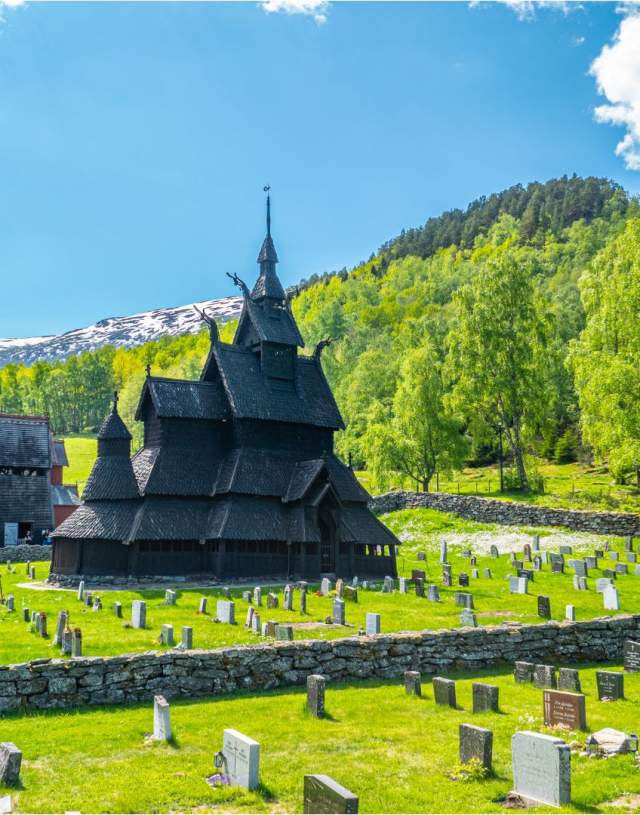Stave Churches in the Sognefjord Region
Unveiling the Mystique
Dear Travel Enthusiasts,
Nestled in the picturesque landscapes of Norway's Sognefjord region, a cluster of architectural wonders awaits you — the Stave Churches.
These medieval marvels offer a captivating journey through time, showcasing the rich history and the dawn of Christianity in Norway after the Viking era.
Join us as we explore five enchanting stave churches, each with its own unique charm and historical significance.
-
Borgund Stave Church: The Crown Jewel Age: Built around 1180
The crown jewel of Norwegian stave churches, Borgund, stands as a testament to medieval craftsmanship. With its distinctive triple nave and intricate carvings, it's no wonder this church is the most visited in the region. Marvel at the dragon heads guarding the roof and let the aura of history wash over you as you step into its hallowed halls.
-
Undredal Stave Church: The Intimate Sanctuary Age: Originated in the 12th century
Venture to Undredal to discover the smallest stave church in Norway. Despite its size, this intimate sanctuary boasts a unique charm and provides a serene escape from the modern world. With a mere 40 seats, it offers an intimate encounter with history, surrounded by the breathtaking beauty of the Sognefjord.
-
Hopperstad Stave Church in Vik: A Timeless Elegance Age: Originally constructed in the 12th century
Hopperstad Stave Church in Vik enchants visitors with its timeless elegance. The interplay of wood and nature creates a harmonious setting, inviting you to ponder the centuries of history etched into its timber walls. Explore the intricate carvings and imagine the tales that linger within the silent walls of this medieval masterpiece.
-
Kaupanger Stave Church: Legacy of the Vikings Age: Dating back to the 12th century
Located on the foundation of the old Kaupang Viking village, Kaupanger Stave Church offers a unique blend of post Viking history and Christian heritage. As you wander through its hallowed halls, imagine the echoes of both pagan and Christian rituals that once reverberated within these ancient walls.
-
Urnes Stave Church: UNESCO-listed Gem Age: Traces its roots to the 12th century
Venture to Urnes, a UNESCO-listed gem nestled on the shores of the Lustrafjord. This stave church stands as a prime example of Norway's medieval wooden architecture, boasting intricate carvings that tell tales of Norse mythology and Christian symbolism. Explore the church grounds and let the whispers of the past envelop you.
Why Stave Churches are Special and Unique:
Norwegian stave churches are not merely architectural wonders; they are portals to Norway's medieval past. Crafted entirely from wood, these churches showcase the unparalleled skill of medieval builders. Each church is a fusion of Christian symbolism and Norse mythology, reflecting the transition from Viking traditions to Christianity.
These structures, built between the 11th and 13th centuries, stand as the first tangible evidence of Norway embracing Christianity after the Viking era. The stave churches are not just monuments; they are living witnesses to a pivotal period in Norwegian history.
As you traverse the Sognefjord region and explore these stave churches, you embark on a journey through time, immersing yourself in the cultural tapestry of Norway's medieval past. Let the whispers of history guide you as you marvel at the craftsmanship, symbolism, and spiritual significance that make these stave churches truly special.
So, fellow travelers, venture into the heart of Norway's Sognefjord region and witness the magic of the stave churches — where history and nature entwine to create an unforgettable experience.
Safe travels and happy exploring!





